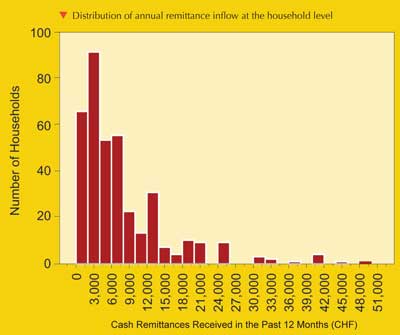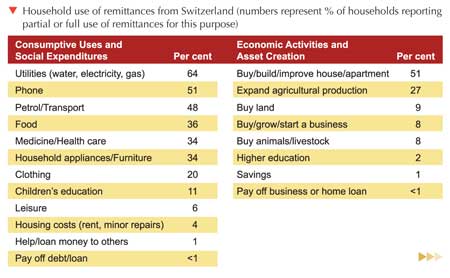The Serbian diaspora in Switzerland is one of the largest foreign populations in the country. The migration of Serbian nationals to Switzerland is largely rooted in Swiss labour migration policies of the 1960s, 70s and 80s when short-term “guest worker” permits were offered to thousands of Serbian nationals.
Over the years, increasing economic hardship remained the key factor motivating Serbian men and women to migrate to Switzerland, and ultimately to remain there permanently. By the time the Swiss government phased out the seasonal guest-worker programme in the 1990s, a large Serbian population had established permanent residency in Switzerland, a status which allowed for family reunification, resulting in the present-day Serbian diaspora of approximately 200,000 people.
This labour migration has had both positive and negative effects on migrant sending households and communities in Serbia, according to a recently published IOM report.
On the one hand, migration to Switzerland has contributed to a significant depletion of the working-age population in many migrant-sending communities and has left behind many households mostly composed of children and elderly people who are increasingly unable of meeting their daily economic needs through traditional agricultural activities because of the absence of working-age relatives.
At the same time, the report clearly establishes that long-standing transnational relationships between these households and their migrant relatives in Switzerland have facilitated the flow of remittances and other forms of material support, which today play an important role in poverty alleviation, especially among older, rural households with low levels of education and an income of less than 1,000 Swiss francs per month.

Data collected by IOM among 343 households in Petrovac na Mlavi and Cuprija, two rural migrant-sending regions of Central and Eastern Serbia, finds that remittances sent by the Serbian diaspora in Switzerland contribute mainly to the acquisition of housing or are used to support recurring living costs and basic needs such as water, electricity, gas, food, medicine, healthcare and, to a lesser extent, children’s education. About 8 per cent of respondents said they invested part of their remittances in small to medium-sized enterprises.
At the micro-economic level, the impact of remittance flows to rural Serbia is confirmed by the fact that more than 90 per cent of the surveyed households receive remittances, which on average total CHF 4,800 per year. The report shows that households also receive goods such as household equipment, mobile phones and televisions, as well as machinery for agricultural activities.
Remittances, which can account for 40 per cent of household income, are mostly sent informally on a monthly basis. They are either hand-carried by migrants, friends or acquaintances or sent via a vast network of bus drivers who shuttle between Switzerland and Serbia on a daily basis.
According to the report, the use of informal channels can be explained by a lack of trust in Serbian financial institutions and by high remitting costs. To increase the flow of remittances through formal channels, the report underlines the need to reduce remitting costs. This could be done by setting up new partnerships between financial service providers in Switzerland and Serbia, by improving banking provisions to bring more people into the formal banking system and by setting up special savings to encourage investments in small to medium-sized enterprises to create employment in Serbia and help the country retain its skilled young professionals.
Other measures, including new banking policies and financial legislation that allow expatriates to hold foreign currency accounts in Serbian banks could further encourage expatriates to invest remittances in enterprises that would benefit Serbia’s poorer regions.

The report notes that the impact of collective donations from migrant associations in Switzerland remains limited. At a local level, donations can make a big difference, as illustrated by the building of a school for special needs children in the municipality of Petrovac na Mlavi, which was funded by Serbian expatriates living in the north-eastern city of St. Gallen.
Measures to back efforts by the Serbian Ministry for Diaspora to encourage collective donations from migrant associations in Switzerland that wish to support community infrastructures, such as roads, water systems or schools for special needs children should be encouraged. Other measures, such as setting up of matching fund schemes should also be encouraged.
Remittances from Switzerland are part of larger flows estimated by the International Monetary Fund in 2004 to have reached USD 4.1 billion, or 17 per cent of Serbia’s GDP, placing Serbia in the top 11 remittance-receiving countries in the world.
This survey, which was funded by the Swiss Secretariat for Economic Affairs (SECO) is one of a three-part investigation of migration and remittances linking Switzerland to Serbia carried out by IOM, the Swiss Forum for Migration and Population Studies (SFM) and the European Bank for Reconstruction and Development (EBRD). The full survey is available at http://www.iom.int/jahia/webdav/shared/shared/mainsite/published_docs/mrs28.pdf